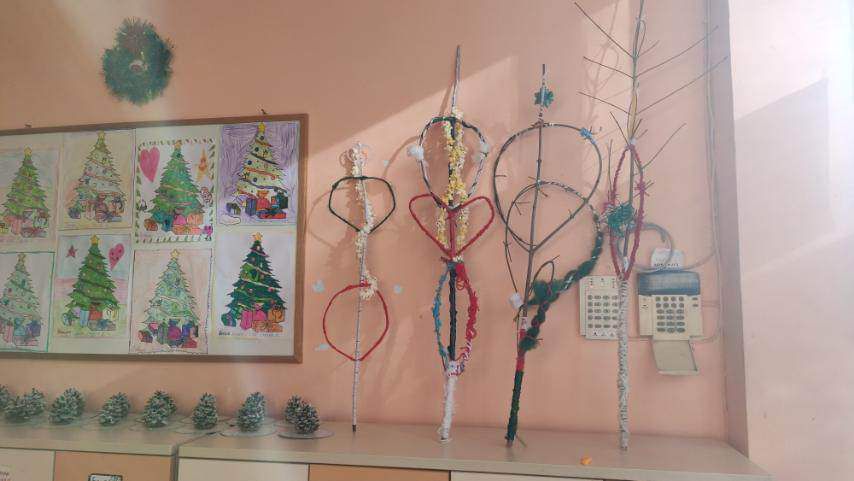On January 1, almost everywhere in the world welcome the New Year. This involves celebrations and traditions that are specific to each country. How do they spend the New Year in Germany, the Netherlands and other countries (not only) of the European Union? Of course, in most countries it is a midnight tradition not to be forgotten to set off fireworks and toast with champagne. It is also customary to make New Year’s resolutions that people want to accomplish in the coming year and try to do so.
The Netherlands
On New Year’s Eve, the Dutch throw parties and have bonfires during which they burn Christmas trees. They are eaten fried balls with sourdough raisins sprinkled with powdered sugar. They are called “oliebollen” and resemble donuts. Tulip country residents buy tickets for a special New Year’s Eve lottery and wait anxiously to see if they will enter the New Year as millionaires. A New Year’s tradition is an unusual and daring dive in the sea or a lake associated with swimming a certain distance. This is considered an extraordinary feat as it is really cold in the Netherlands at that time and the water is very cold. A fresh start to the new year is to ensure health. The hardy ones then have a thick soup, usually pea soup with smoked sausage, as a reward. In some areas of the Netherlands, local clean-ups are organised on New Year’s Day to clean up rubbish from the previous day’s fireworks. They spend the day relaxing, being outdoors, hiking, or engaging in other sporting activities.

England
In England, there are spectacular firework displays behind Big Ben lasting 12 minutes. Thousands of people gather on the banks of the River Thames to see them. However, they must purchase a ticket beforehand to get into the event.
Germany
It is said that whoever eats well on New Year’s Day will have abundance all next year. They eat mainly fish, poultry is not preferred, because Germans believe that they would run out of money. Fondue and raclette are popular. They eat lentils because of their coin-like shape, assuming it will bring them wealth. Popular ones include waffles and marzipan pigs or ladybirds. On this special day, a special punch is drunk, the ingredients of which are mulled wine, rum, orange, lemon, ginger, sugar, cinnamon and cloves. A well-established, though older, custom is the casting of lead. Small lead figures (or other metal) are held over the fire, which makes them melt. This liquid is then poured into cold water. According to superstition, the shape of the casting is supposed to determine how a person will fare in the coming year. For example, an eagle symbolizes success at work, a ball good luck, flowers mean new friendships.

Hungary
In other countries, eating fish on New Year’s Eve is welcomed because the fish scales resemble money in their shine, but in Hungary they don’t practice it because they think that their luck will float away with their money in the next year. The most popular meal is roast pig and on New Year’s Day lentil soup. Just after midnight comes the time for the ritual – a kiss on both cheeks. Hungarians make a lot of noise at midnight to scare away evil spirits, even banging pans and pots in the kitchen at one time. A sightseeing cruise on the Danube or a visit to the Hungarian State Opera is customary. In order to keep their luck, on New Year’s Day it is forbidden to wash, sew, and also take out the garbage. That is to say, it is believed that good luck would be thrown out with the garbage. Hungarians also avoid going to the doctor on this day to stay healthy during the year. The first one to visit is supposed to be a man to bring good luck. If a woman enters, she brings bad luck. As we can see, in Hungary they believe in superstition to a large extent.
Bulgaria
On New Year’s Eve, the traditional dish of banitsa, made with several layers of beaten eggs and Balkan or feta cheese, is a must. Hidden in this pastry are cards that say: health, happiness, love, new job, and also a coin symbolizing money. Instead of petals, it may also hide dogwood buds, which also symbolize one of these attributes. Depending on who receives which ticket in a piece of this pastry, their prediction is to be fulfilled. For example, if someone receives a coin, it means that he will be rich in the new year. New Year’s dishes are pork with cabbage, roasted rooster or turkey with rice, dried fruit. In Bulgaria, part of the celebration and welcoming of the New Year is the so-called survakane. On New Year’s Day, children go from house to house in groups with a wooden, richly decorated stick – a survačka – in their hands. They symbolically beat loved ones, acquaintances and neighbours on the back while reciting poems wishing health and wealth, which is supposed to guarantee an abundant and prosperous year. The master of the house will reward them with a treat – candy, nuts or money. This stick is made from dogwood twigs and decorated with popcorn, coins, coloured wool or prunes. Some of the children are helped by their parents, the older ones can do it on their own.

Romania
The tradition, as in Hungary, is that after midnight a man must enter the house first, not a woman, as this would bring bad luck. On the New Year’s table, fish and grapes are traditional dishes. It is said that it is necessary to open the door for the old year to leave and make way for the new one. A popular ritual includes a kiss under the mistletoe so that the participants are accompanied by love throughout the coming year. At the time of the moment when the new year alternates with the old one, the custom of people putting on a new coat preferably in red or another cheerful colour to attract positive energy has been preserved. In Romania, caroling starts before Christmas and lasts until the first days of the New Year. The children walk with a stick – a sorca stick, which they have decorated with flowers, coloured papers or tassels. After the vignettes, they also receive a reward of cakes, fruit, sweets or money. So this custom is similar to that in Bulgaria. As part of the trick-or-treating, trick-or-treaters dress up as a bear, don a sheepskin coat or a long coat. The caroling is accompanied by the crack of the whip and the sound of drums to make noise to scare away evil forces. During the New Year’s Eve dinner, Romanians indulge in a sumptuous feast in the hope that it will ensure abundance in the coming year. The drink used to toast a prosperous new year is called palinca (slivovitz).
Serbia
Serbs as Orthodox Christians celebrate New Year’s Eve and New Year 13. and 14 January, because they follow the Julian calendar, which has a 14-day offset from the Gregorian calendar (used in most countries). The traditional alcoholic drink is rakija – grape brandy, sometimes mixed with whiskey and spices. Among the dishes, sarmas (cabbage rolls), roast pig and walnut strudels are popular.
Lithuania
Lithuanians indulge themselves on New Year’s Eve, spending this day in hedonistic style. They eat similar meals as on Christmas Eve. They have to stay up until midnight because they think that if they go to bed earlier, it will bring them bad luck next year.
Read also about Christmas traditions and dishes that Christmas dinner would not be complete without in each country.
Which traditions do you celebrate with your family?







